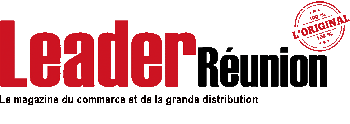At a time when commerce is looking for new uses to support the new aspirations of consumers, rental fits perfectly into this trend. Rental allows you to extend the lifespan of the product and limit pollution, particularly in the textile sector, one of the most polluting industries. OneStock, Europe's leading specialist in omnichannel order management, illustrates the new trend of omnichannel commerce.
A new mode of consumption induced, most of the time, new omnichannel purchasing journeys, and one of the many advantages of rental is that it can be applied to many sectors of activity. Like the Atelier Bocage initiative, which offers to rent shoes all year round rather than buying them. The rental trend is moving closer to the subscription model for many sectors. Customers take out a subscription for a flexible duration, receive the product and return it at the end of the rental contract. In such a context, the customer must perform several actions. Create a profile and complete the information relating to your gender, his size, the type of items searched, his tastes (to benefit from personalized suggestions). If the retailer allows it, it is also possible to choose the number of items you wish to rent each month. The customer must also choose the dates, the rental period (one month, a quarter, one the) depending on the options offered by the retailer. He must choose the desired type of delivery according to the available options. : at home, at relay point, a magazine. Finally, after enjoying its articles within the allotted time, the time comes to return them. Generally, the retailer facilitates returns processes, either by including the return label when sending the items, either by allowing in-store returns.
What are the advantages of rental ?
Whether for brands or customers, rental can be a useful mode of consumption, relevant and adapted to the times. Control your budget, renew your wardrobe, access exclusive pieces, reduce your consumption : these are several of the advantages that we can see in rental for the consumer. But also for an omnichannel brand, the advantages can be multiple. There is the brand image modernization by implementing more virtuous and modern consumption models, in relation to the concerns of potential buyers. Winning new customers consistently (For example, not everyone needs a drill now, but is likely to need it one day). Likewise, for the fashion industry, customers wishing to have access to the latest pieces and trends at a lower cost can be tempted by rental. Also to consider, l’optimization of margins thanks to rental since, the more the item is rented, the more the margins increase.
The order management software system applied to rental
For omnichannel brands, l’OMS (order management system) plays a centralizing role. The omnichannel software suite helps indicate where stock is located and defines the best stock point to serve customer rentals. For order orchestration, it is possible with the WHO to go further and strengthen a circularity approach by defining rules favoring the rental of items already used. If these are unavailable, then the WHO will use the stock of so-called new items to ensure rental. In terms of storyline, the delivery promise (delivery promise) has an essential role here, because it allows the display of available rental dates, by synchronizing new slots when a rented item is returned. The OMS will make available to customers the same services as those generally offered by the brand : home delivery, click and collect, etc. We can even imagine shoe-type e-reservations where the customer can confirm their size via an in-store fitting before renting the pairs of their choice.. Returns management can, her too, be managed by WHO, in free-service. One of the notable points linked to the rental trend is that this mode of consumption also serves as a source to supply second life platforms.. We thus see that the different axes of the circular economy feed each other..












